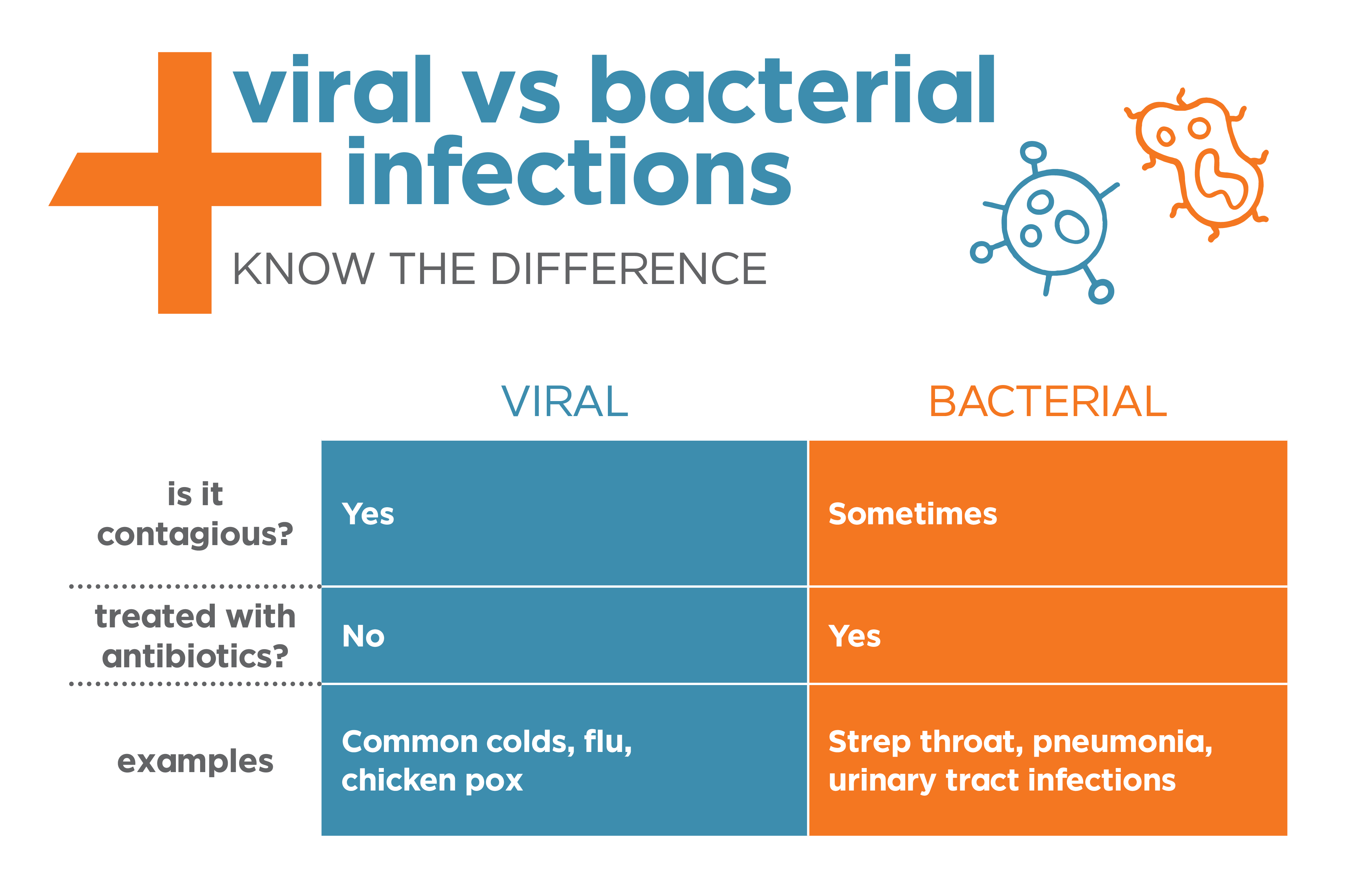Preventing Unnecessary Use of Antibiotics
Colds, flu, pneumonia and strep throat – all familiar illnesses that many of us have experienced.
Did you ever wonder why with some illnesses your doctor prescribes antibiotics and with other illnesses you’re advised to rest, drink fluids and take over-the-counter pain relievers?
Your treatment varies based on the type of microbe – either a bacterium or virus – that caused your illness. Antibiotics are only used for bacterial infections; they are not effective for viral illnesses.
Differences Between Viral and Bacterial Infections
Although bacteria and viruses are both microbes, they are different organisms that cause disease in our bodies in different ways.
Viruses are not complete cells; they need a living host, such as a person, animal or plant, to survive. Much smaller than bacteria, viruses invade cells inside a host to reproduce. Most viruses will cause illness.
Bacteria, on the other hand, are usually single-celled organisms that can survive on their own. Most bacteria are harmless, and some types are beneficial for us, such as the bacteria in our gut that helps us to digest food. There are some strains, though, that cause illness.

Looking for an alternative version of the above infographic?
Different Infections
The common cold, flu (influenza), and chicken pox are examples of viral infections. Viral illnesses are contagious and can be transmitted through coughs, sneezes and other bodily fluids.
A bacterial infection usually stays within one area of your body, meaning it is a localized infection. If you’ve ever had a sinus infection, you’ve experienced the localized symptoms of this bacterial infection: congestion, sinus pressure and thick, greenish-yellowish nasal discharge.
Examples of bacterial infections include strep throat, some pneumonias, and urinary tract infections. Some bacterial infections – like strep throat – are contagious, but many common bacterial infections are not. These include ear, sinus, bladder, or kidney infections.
Treating Viral and Bacterial Infections
Viral infections generally must run their course, with treatment aimed at easing symptoms and providing some relief while you’re sick. Sometimes, antiviral medications are prescribed for specific infections, such as flu (influenza) and shingles.
Only bacterial infections can be treated with antibiotics. These drugs fight bacterial infections by either killing the bacteria or making it difficult for bacteria to reproduce. It is important to only take antibiotics for bacterial infections and to follow your healthcare provider’s instructions carefully when taking these medications.
The unnecessary use of antibiotics is one of the leading causes of antibiotic resistance, which means that bacteria are able to avoid the effects of an antibiotic and still survive after treatment.
Antibiotic resistance can cause once-treatable infections to become untreatable.
According to the CDC, approximately 2.8 million people in the United States become infected with antibiotic resistant bacteria each year.1 Visit the CDC’s website to learn more about antibiotic resistance and what you can do to help combat it.

Preventing Viral and Bacterial Infections
Good hygiene is extremely important in preventing any type of contagious infection, whether it’s viral or bacterial. Wash your hands for at least 20 seconds with soap and water, use alcohol-based hand sanitizer, and clean surfaces that have come into contact with sick people. Cover your coughs and sneezes, and always stay home when you’re sick to avoid spreading illness.
To prevent bacterial infections in wounds and blood, be sure to always clean and treat any cuts or scratches that you have. Wash your wound gently with mild soap and water, use a topical ointment to help healing, and cover it with a fresh bandage daily.
Another way to prevent the spread of disease is through immunizations. Vaccines are available for a number of viral and bacterial infections. Most people begin receiving routine vaccinations as infants and continue on a set schedule throughout childhood and adolescence. Visit the CDC’s website to learn more about recommended vaccines by disease.
Healthcare Decisions
Knowing the differences between viral and bacterial infections can go a long way in helping you make decisions about your health care, as well as helping you understand the treatment options your healthcare provider recommends. If you have symptoms of a cold, flu or other illness, visit your local MedExpress center. Our friendly, caring medical team can diagnose your illness and suggest an appropriate treatment to get you feeling better fast.
References:
1 CDC: Antibiotic Use and Antimicrobial Resistance Facts. Updated April 22, 2024. Accessed August 2, 2024.
